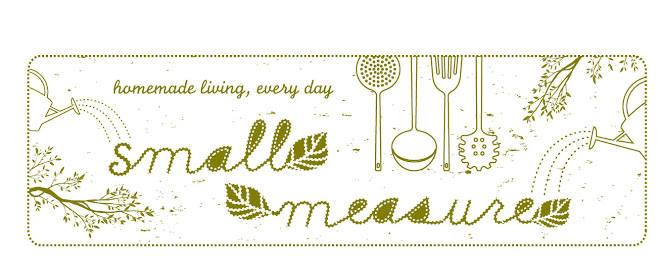

Several weeks ago when I opened up small measure to the possibility of guest posts, Daisy Siskin from over at Little House in the Suburbs was one of the first folks to respond. Rife with posts on everything from DIY furniture polish to, most recently, homemade water kefir, Daisy's blog is one you will absolutely want to add to your daily blog roll.
Today, she's guiding us through information on the medicinal herb Valerian. I remember years ago, when I was the bulk herbs and spices buyer for Whole Foods in Arlington, Virginia how my co-workers would moan and groan whenever I'd open up a fresh bag of the herb. "Wet dog!" or "smelly socks!", they'd yell out, holding their noses in exaggeration. To me, I always found the aroma more redolent of root beer. Whether you find Valerian stinky or sublime, it's inherent beneficial medicinal properties are a force to be reckoned with, as Daisy expertly illustrates!
Weird Gardening: Daisy Siskin
"When I first started gardening I stuck with basic plants, nothing out of the ordinary. Once I became comfortable with the nuts and bolts, your basic veg and fruit, I went a little crazy and started to experiment with things you won’t find in the seed rack at the hardware store. Weird things, you might say.
Every year, I sneak a few of these off-the-beaten-path plants onto the seed list, put them in the ground, and watch what happens. I love the surprise of growing something in my garden I’ve never even seen before. More often than not, being of the absent-minded breed of gardener, I forget what I planted, where. First I think, “Shoot! Why can’t I remember to label?” But then it turns into an adventure because I have to go all Nancy Drew to identify which seedlings are which.
The surprise plant this Spring is valerian (Valeriana officinalis). I planted it last year, but it didn’t flower until now. It’s an early bloomer, beginning toward the start of May in zone 7, and stays in bloom for several weeks. The fragrance is sweet, kind of like vanilla butter cookies, and the blooms (mine are white, some are pink) are delicate and airy. At five feet tall, it’s definitely best for back of the border. I learned this too late and mine is smack in the middle, as if I built the garden around it. The white umbels seem to glow in the night garden.
Teas, tinctures, and powders made from valerian root have been used in traditional medicine forever for insomnia and anxiety. The action of valerian on the brain is similar to benzodiazepines such as Valium and Xanax, but milder. Historically, its uses have ranged from love potions (to drive your lover bananas) to catnip substitute (to drive your cat bananas) to irritability reducer (to keep from being driven bananas).
I haven’t tried valerian myself, and obviously anyone would want to check into it thoroughly before trying it. Research the websites of university complementary and alternative medicine departments or a good herbal medicine manual like The Encyclopedia of Herbal Medicine, by Chevallier (DK: 2000).
Even if I never use valerian medicinally, it’s worth growing for its surprising height and country fencerow good looks. Plus, I hear its roots attract earthworms. If you garden, you know that makes my heart go pitter-patter.
Thank you, Daisy, for this excellent post! Do check out her blog, friends. You won't be disappointed. And for those of you who think you've got something small measure readers might also enjoy reading, send me an e-mail and let's see if we can't just get something going between us!























